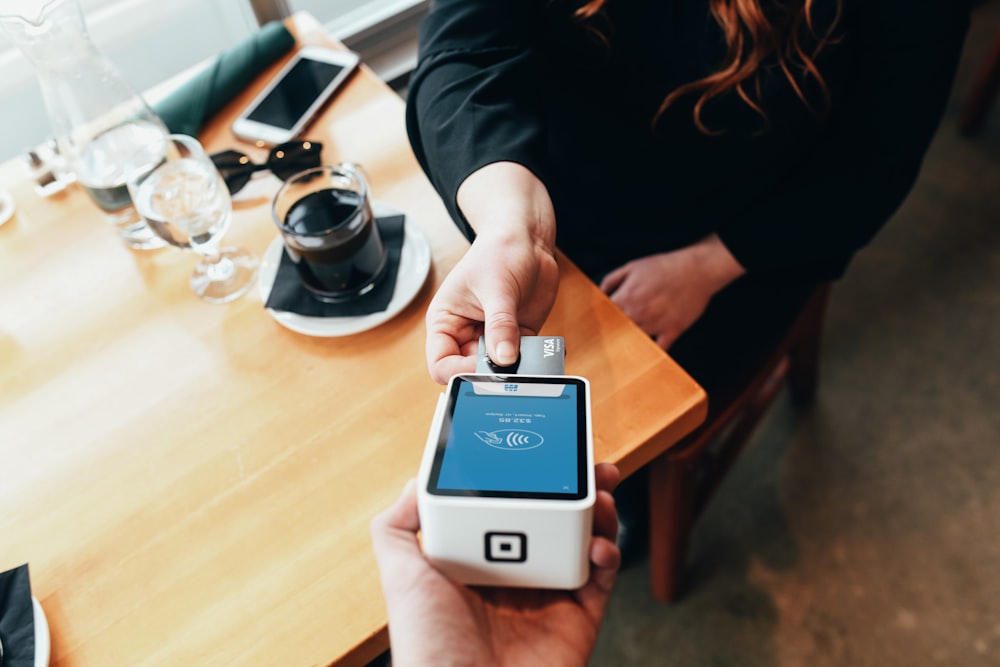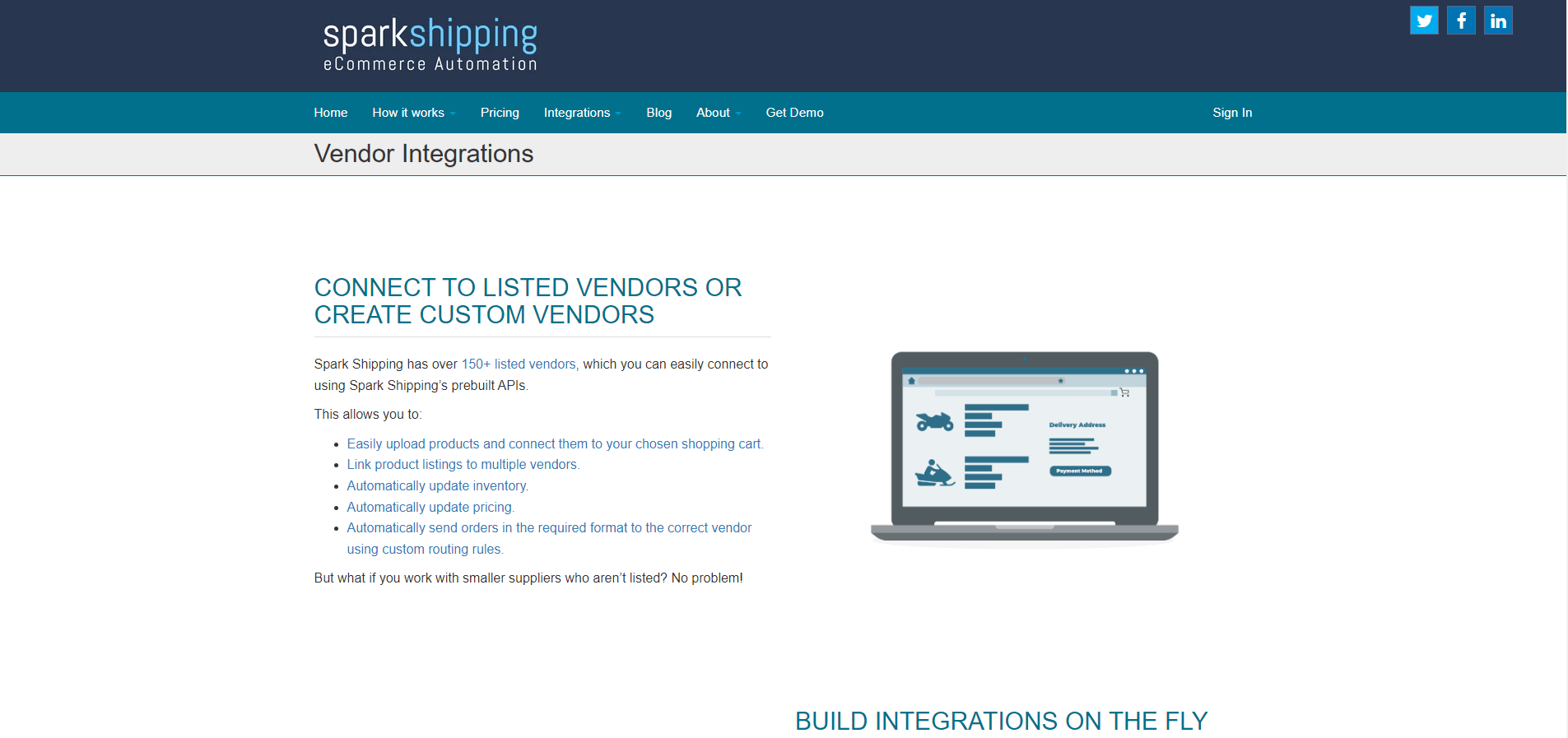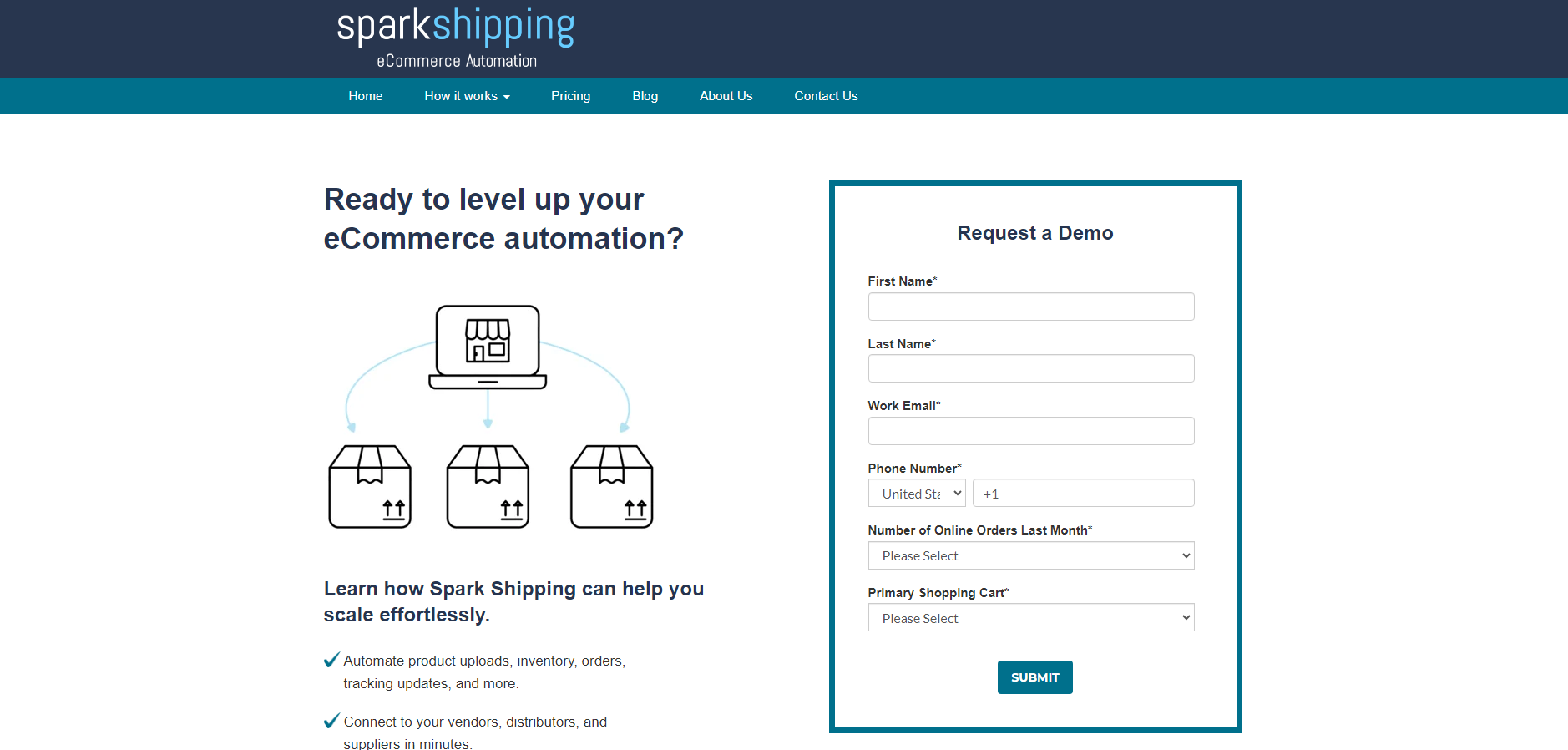Business Plateauing? It’s Time For A New ECommerce Growth Strategy

eCommerce is a hot market with so much opportunity. In fact, the global eCommerce market will be worth an eye-popping $47.73 trillion by 2030.
With more people opting to shop online, it seems like the only way to go is up.
The demand might be there, but even then, your online store has to continually attract new customers and retain existing customers to stay profitable.
But competitors, consumer preferences, and passing fads make it tough for even the biggest, most experienced eCommerce brands to make a living.
Instead of resting on your laurels, it’s high time to create an eCommerce growth strategy that keeps you in the black both this year and the next.
In this guide, we’ll share helpful advice for measurable eCommerce growth.
Whether your goal is to increase online sales or spend less time managing your business, check out this advanced playbook for sustainable eCommerce business growth.
Your 3-Step eCommerce Growth Strategy for Next-Level Business
You’ve already done the hard work of building an eCommerce brand, website, and customer base. But you don’t want sales to flatline—your mission is to continually move the needle upwards.
Optimize your marketing, shopper experience, and business operations with this three-pronged eCommerce growth strategy, which is guaranteed to fuel eCommerce success.
Revamp Marketing for Your Online Store

How’s your marketing strategy working for you? Whether you’re already investing in social media marketing or letting your eCommerce site SEO do all of the work, some of your marketing efforts could likely use a tune-up.
Cover the Basics First
Make sure you’ve covered the basics before investing in more advanced marketing techniques. Every business is different, but cover these basics before you try anything new.
Understanding Your Shoppers
Audience targeting and segmentation are marketing 101.
If you haven’t segmented your audience yet, try it! You likely have anywhere from two to six different audience segments, all of which expect different things from your brand.
Conduct buyer research, so you know exactly what each segment needs to see in your messaging, pricing, product features, and more.
Audience research is the foundation of a successful eCommerce growth strategy, so don’t overlook the power of understanding your target market.
Tracking Customer Data
You don’t have to guess what customers think—analytics will tell you what your target audience thinks about your marketing messaging.
At a minimum, you need to be following data from your website analytics, social media, customer relationship management (CRM) platform, and sales platform.
Advanced data analytics gives you more insight into customer behavior, which you can use for retooling your marketing efforts. That might mean expanding to new social media channels or creating more user generated content for your website, for example.
Marketing on Multiple Platforms
You don’t have to be on every promotional platform, but you should embrace a multichannel approach that integrates the shopper experience across all marketing channels.
Promote yourself via email, SMS, social, your website, videos, and podcasts with a consistent voice and message. As long as you post quality content consistently, you'll see a gradual increase in website visitors, engaged consumer behavior, and repeat customers.
See What’s Working With Attribution Modeling

You invest a lot of time and money into marketing. But are your efforts actually paying off? Before you invest more resources into your marketing efforts, make sure your attribution is working correctly.
In marketing, attribution tells you where leads come from and how engaged they are. Tools like Google Analytics and social media platforms' native analytics dashboards will paint a clearer picture of where your traffic is coming from.
Use these insights to tweak your eCommerce marketing strategy.
For example, if you’re putting a lot of time into filming videos but get most of your website traffic from affiliate partners, it’s time to either invest more in affiliates or rethink your approach to video marketing.
Attribution data don't lie, so always check the numbers to see what’s working and what’s not.
Invest in Organic Content and SEO
When was the last time you reworked your website copy? Or your product listings, for that matter?
You don’t have to jump headfirst into paid ads if you want more traction for your online store.
What you really need is to maximize organic avenues, like content and search engine optimization (SEO), first.
Consistency matters here. Regularly updating your eCommerce website with relevant, high-quality content engages your audience and establishes your brand as an authority in your niche.
Not only that, but regularly posting helpful content will also boost your rank in search engines like Google.
Most eCommerce shopping searches start on a search engine, so optimizing your site for SEO will attract way more interested shoppers to your site.
They might not be ready to buy right away, but organic digital marketing fosters long-term relationships that could very well turn into purchases down the line.
Want to learn more about eCommerce SEO? Check out Spark Shipping’s guide to keyword research, on-page optimization, and content marketing for eCommerce.
Partner With Influencers and Affiliates

Despite all your hard work, shoppers might still be leery of your marketing. After all, can they really trust you? You’ve got too much skin in the game.
Sometimes it’s best to let other people pump up your brand. That’s where influencer marketing and affiliate marketing come into play.
Influencers are powerful social media users who have credibility in a specific niche. Trusted influencers have the power to influence shoppers’ purchase decisions because of the relationships they cultivate with these potential customers.
For a fee, these influencers will be happy to promote your products to their followers—as long as they're relevant. Collaborating with influencers can increase brand awareness and encourage customers to visit your eCommerce store.
Not only that, but these partnerships put you in front of potentially thousands of new buyers!
You can always DIY influencer marketing, but it’s generally best to work through a platform if you’re new to it. Platforms like Upfluence and Creator.co are popular options for getting started.
You can also set up affiliate marketing campaigns if you don't want to work with influencers. With this eCommerce growth strategy, everyone becomes an influencer on your behalf.
Bloggers, YouTubers, and social media users can sign up to become affiliates and promote your products to their followers. Every time someone makes a purchase from their unique URL or code, the affiliate gets a commission in exchange for bringing you a new customer.
You only pay affiliates when they bring in a sale, so this is a much more affordable and ROI-friendly way to boost sales.
Want to learn more about influencer marketing? Check out Spark Shipping’s guide to finding influencers and creating effective campaigns.
Pitch the Media

Public relations (PR) might sound old-fashioned, but this eCommerce growth strategy is perfect for putting your products in front of more shoppers.
Learn how to pitch the media to get your products mentioned in the news. Plenty of content sites want to feature high-quality products for their readers, and sometimes it just takes a quick email to get your product mentioned on these lists.
Some media outlets will only accept product mentions if you offer an affiliate arrangement, so consider setting one up before pitching to journalists. The commission needs to be worth their while, so you might want to consider offering media outlets a higher commission in exchange for features.
Run Paid Ads
So many eCommerce brand owners immediately jump to ads when sales are down. That isn’t necessarily a bad idea, but it’s an expensive one.
Ads on Google, Facebook, and other social networks can bleed your marketing budget, which is why we only recommend running ads if you’ve tried everything else first.
While most marketing efforts take time to pay off, you’ll see near-instant results with paid ads.
With the right approach, you’ll boost website traffic, build your email marketing list, and maybe even score a few more sales with paid campaigns.
Paid ads aren’t for the faint of heart, though, so do your research before investing this admittedly pricey eCommerce marketing strategy.
Download Spark Shipping’s Google Shopping Ads guide to start selling on Google Shopping—without the learning curve.
Optimize the Shopper Experience

Marketing is important, but what’s the shopper experience like once someone's ready to buy?
The better you treat shoppers, the more likely they are to stick around and recommend you to their friends and family. Go over your customer experience with a fine-toothed comb to find opportunities for improvement.
Personalize Shopping
Seventy-one percent of shoppers expect personalized shopping experiences. If you’re giving every shopper the same experience, you’re overlooking this giant shift in shopper expectations.
Personalized eCommerce experiences are trickier to manage than unpersonalized ones, but when sales are at stake, it’s time to try something new.
If you’re craving eCommerce growth, sprinkle more personalization into the shopping experience. This doesn’t have to be difficult, either. You can personalize shopping by:
- Sending personalized product recommendations based on customer data
- Predicting consumer behaviors with artificial intelligence (AI) tools to send recommended products, content, and coupons on a customized timeline
- Using the shopper’s name whenever possible
- Segmenting email lists and customizing messages based on that segment's needs
- Personalizing product pages based on users’ location data
The goal is to make shoppers feel like they aren’t a number. The more of a bespoke experience you give them, the more likely they are to remember your brand and become lifelong customers.
Revamp Your Website for UX

User experience (UX) is everything in eCommerce. In fact, bad UX costs eCommerce businesses as much as 35% of their sales—totaling $1.4 trillion every year.
You don’t have to completely redo your eCommerce website. The goal is to make the site more functional and accessible.
Good UX minimizes friction in the buying process, making it easier for online shoppers to navigate, select, and purchase products.
UX is an entire discipline on its own, but you can start improving your site UX by:
- Following W3C accessibility requirements. The more disability-friendly you make your shop, the wider an audience you’ll reach
- Adding a progress bar to checkout
- Designing a clutter-free checkout page with fewer steps
- Adding an SSL certificate to your site
- Improving page loading times. Your site needs to load in two seconds or less
- Minimizing the number of items in your main navigation bar
- Allowing guest checkout
- Accepting as many payment methods as possible
If you aren’t sure where users are encountering issues, check your site analytics. Look for pages with a high bounce rate and dig deeper.
Install heatmap software to record user sessions and spot high-friction areas. Heatmaps act as guides, helping you spot prime candidates for a UX overhaul so you can make the most useful improvements in less time.
Try Conversion Rate Optimization (CRO)
eCommerce companies use CRO to increase conversion rates.
Most eCommerce site owners only track purchases as conversions, but most shoppers go through several mini-conversions on their way to buying a product.
From reading your blog to signing up for your email list, these conversions also add value because they deepen your relationship with that shopper.
Regardless of whether you want to boost sales conversions or email subscribers, CRO will give you an actionable list of ways to keep shoppers engaged.
CRO requires time and hard work, but you can get started with this CRO checklist:
- A/B test landing pages to find the most effective elements
- Add more multimedia (photos, infographics, and videos) to your site
- Removing fields from forms to increase customer satisfaction
- Adding relevant calls to action (CTAs) on the right pages
- Include trust signals, like customer testimonials and certifications
- Create FOMO (fear of missing out) or scarcity with limited-time offers and countdown deals
- Improve your shipping speed or returns policies
Create a Customer Loyalty Program

One-time purchases are fine, but as an eCommerce brand, you want to attract repeat orders, too.
A customer loyalty program is the best way to encourage repeat purchases while boosting customer retention and brand loyalty.
Rewarding loyal customers cultivates a sense of belonging and appreciation. It also doesn’t hurt that it gamifies the shopping experience, giving buyers one more reason to go with you over any other brand in the space.
If you use Shopify, there are plenty of customer loyalty apps to choose from. You can also work with a developer to create your own loyalty program.
The key is to make sure your loyalty program is actually valuable. Shoppers want to see tangible rewards for their loyalty, so be generous!
A successful customer loyalty program should offer a variety of perks, including:
- Discounts
- Member-only benefits, like free shipping or free product samples
- Exclusive access to new products
- Points redeemable for products
- A loyalty members-only communities and content
Make your loyalty program as simple as possible to use. Clarity will encourage more of your customer base to join in and engage with the program.
Invest in Customer Service
More than half of all shoppers will leave a brand for good—and switch to a competitor—after a single bad experience.
eCommerce is such a competitive space that you can’t allow shoppers to leave you for a competitor. While you can’t prevent all attrition, you can certainly retain loyal customers by investing in customer service.
Exceptional customer service is the cornerstone of any effective eCommerce strategy.
Offering live chat 24/7 on your eCommerce site can significantly improve customer satisfaction.
You don’t have to hire real humans for this, either. Use an AI-powered chatbot to handle common queries and issues based on your FAQs.
You can also improve customer service by:
- Proactively asking customers for feedback or reviews after their purchase is delivered
- Delighting customers with birthday freebies or “just because” gifts
- Offering no-hassle returns and shipping
Streamline the Back End of Your Business

Marketing and UX are customer-facing areas with so many opportunities for improvement. But your back-end business processes also have a tremendous impact on your eCommerce business strategy.
They affect everything from stocking to customer satisfaction to profitability, so it’s hard to grow without revamping your back-office processes.
Follow these tips to embrace eCommerce growth and run a smoother business.
Embrace Automation

Manual tasks take too much time and increase the risk of errors.
Both you and your customers will be happier if you strategically automate certain tasks in your business, like inventory management, order tracking, and vendor mapping.
The key is to pick the right automation tool for the job. Spark Shipping supports eCommerce growth strategies by automating just about every back-end process of your eCommerce business, including:
- Vendor integrations
- Inventory management
- Product management
- Automated product linking
- Order fulfillment
- Tracking updates
When growth is the goal, go with a proven automation solution that gets you to the finish line faster. Schedule a Spark Shipping demo now to see our tool in action.
Watch Your Pricing
Dynamic pricing is the key to staying competitive in eCommerce. Normally, adaptive pricing would require manual effort where you spend hours every day tweaking your listings. That takes way too much time, so go with pricing automation instead.
Spark Shipping’s automatic pricing rules help you comply with MAP, follow pre-set pricing rules, and prevent over- or under-charging. All pricing adjustments happen in real-time, giving you the benefit of dynamic pricing without the hassle of hands-on eCommerce management.
Partner With Solid Suppliers
The right eCommerce supplier makes all the difference. Chances are, your business partners with several vendors to stay in-stock at all times.
The more suppliers you have to manage, the more complex it gets to handle everything manually, so automate supplier relationships as much as possible.
Whether it’s a solution like Spark Shipping’s vendor integrations or an EDI setup, this will make it much easier to port over vendor data without any back-and-forth stress.
If you go with Spark Shipping, our one-to-many vendor mapping helps you choose the lowest-priced, in-stock vendor for every dropshipping order, helping you maximize margins with every sale.
Outsource Strategically

It’s a good idea to keep your eCommerce team small and scrappy, but even then, it’s tough running an entire business by yourself.
The best way to streamline your back-office is to strategically outsource certain tasks.
This depends on your preferences, budget, and business plan, but most eCommerce brands outsource tasks like:
- Customer service
- Fulfillment
- Marketing
You don’t have to hire internal employees, either. Outsourcing customer service to platforms like Zendesk, for example, is a smart way to get the service you need without the expense of hiring someone full-time.
Grow Your eCommerce Business With Spark Shipping

Growth is the goal of every eCommerce business. From engaging existing customers to promoting yourself to new customers on social media, you need a robust eCommerce growth strategy that takes you to the next level.
Excellent customer service, analyzing customer insights, and optimizing your marketing campaigns will get you far, but even then, you need extra hands to manage your growing eCommerce business.
Holistic eCommerce strategies are key to sustainable growth, and that includes a reputable automation tool. Spark Shipping is the trusted partner for online stores and dropshipping businesses that need to see real growth, fast.
Get Spark Shipping in your corner: Schedule a demo now to see this powerful tool in action.
Popular Posts
Posts by Topic
- Dropshipping (5)
- Dropshipping Automation (4)
- Dropship Suppliers (3)
- EDI (3)
- Pricing Strategy (3)
- Amazon Seller Central (2)
- Conversion Rate Optimization (2)
- Dropshipping Products (2)
- Order Management (2)
- Vendor Product Catalog (2)
- Dean Soto (1)
- Feature Announcement (1)
- Online Empire Academy (1)
- Product Optimization (1)
- Shipping (1)
- referral marketing (1)